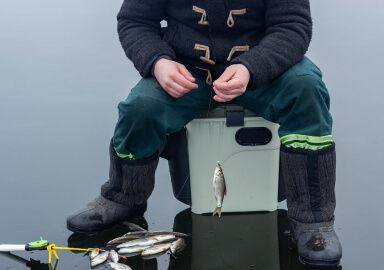Tautog
Tautog is a heavy, bottom living, wreck loving, difficult to hook and land fish of the eastern coast of the USA.
View 8 listings
8
listings
–
price starting from
1
countries
–
to the nearest trip
Where and When?
Tautog are only found in the Atlantic Ocean along much of the eastern coast of the USA, and, while they are found from Nova Scotia to North Carolina, they are most common between Cape Cod and Delaware Bay. They are generally an inshore species and although spawning takes place offshore the juveniles all seem to end up in weedbeds in shallow water and gravitate back into deeper waters offshore as they grow. Adults are usually found in waters between 1 and 75 meters (3 to 245 ft.) and some even enter brackish waters in lagoons and estuaries. They seem to be almost completely associated with hard substrates, particularly reefs and wrecks, but anything will do and jetties and structure can also attract them. In summer they are mostly to be found closer inshore and this is when they are generally more active and feeding enthusiastically. While the best fishing for smaller and medium sized tautog may be in summer, the specialist fisherman often finds the larger specimens in deeper waters offshore during winter.
About Tautog
Tautog (Tautoga onitis) are a robust, solid, elongate fish usually with brown or dark brown mottling along the body. The skin is thick, rubbery and covered with a sticky slime which probably helps prevent them being damaged by the rocks with which they are closely associated. They have a large mouth with powerful teeth at the front and impressive “molar” type teeth at the back of the throat which they use to crush and grind up food. They feed mostly on benthic invertebrates - the wide variety of animals that live on the seashore - and can tackle almost anything. They probably favour crabs, of a variety of species, but will opportunistically engulf most things that come close enough. The tautog are a slow growing species with a maximum known age of 34 years and have attained 90 centimeters (3 ft.) and 13.1 kilograms (28 lbs). The average size caught is between 0.5 and 1.5 kilograms (1 – 3 lbs). Males are highly territorial and defend territories and “court” females. Spawning takes place in late spring and early summer. The larger specimens generally move offshore as winter approaches and their activity and feeding levels slow down.
How to Catch?
Most people will report that tautog are a difficult and frustrating species to target. It appears that they not only favor reefs and wrecks but, according to spear fishermen, they spend much of their time inside the wrecks and in the crevices of reefs. The result is that it is difficult to land them as they often shoot out from cover, suck in the bait and then retreat back under cover and snag the line. Not only that but most anglers report that hooking them is difficult due to their hard mouths and their habit of not swallowing the bait straight away. Despite the difficulties, many anglers are keen to catch tautog and, although they may be caught from piers and jetties, most people favour small boat angling. Targeting tautog at a wreck requires skill, patience and some expertise. It seems that if you are in the right place you will lose tackle, either to the wreck alone or the fish returning to its cover. Many anglers target this species precisely because it is not easy to catch and large specimens may only occasionally be found. One trick is simply to learn when to strike, then strike hard, keeping the line tight for the first few seconds to prevent the fish returning to cover. Using braid, as opposed to nylon, can greatly increase success rates and most people find tautog flesh very palatable.







